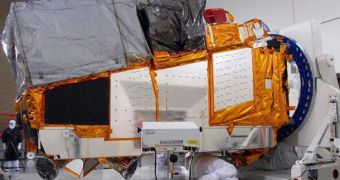Officials from the American space agency announced yesterday, October 12, that their newest weather and climate satellite will launch on October 27, from the Vandenberg Air Force Base (VAFB), in California. This mission has been a long time coming.
Dubbed the National Polar-Orbiting Operational Environmental Satellite System Preparatory Project (NPP), the spacecraft will play a very important role in boosting meteorologists' ability of making accurate, short-term weather forecasts.
In addition, the amount and diversity of data the mission will acquire will be used to derive new insights into how Earth's climate changes in the long run. NASA officials say that this is the first mission launched to meet these two objectives specifically.
The NPP is the only remaining component of the former NPOESS mission. This was to be a new satellite constellation for the United States, but the program was dissolved in 2010. It was replaced by the Joint Polar Satellite System (JPSS), of which the NPP is the first component.
Though the satellite was built by NASA, control of the spacecraft will eventually be handed over to the National Oceanic and Atmospheric Administration (NOAA), which will then use the new data to augment its own climate prediction models.
“NPP's observations of a wide range of interconnected Earth properties and processes will give us the big picture of how our planet changes,” NASA Goddard Space Flight Center (GSFC) NPP project scientist Jim Gleason explains.
“That will help us improve our computer models that predict future environmental conditions. Better predictions will let us make better decisions, whether it is as simple as taking an umbrella to work today or as complex as responding to a changing climate,” he goes on to say.
NPP will contain a suite of five scientific instruments – the Advanced Technology Microwave Sounder (ATMS), the Cross-track Infrared Sounder (CrIS), the Ozone Mapping and Profiler Suite (OMPS), the Visible Infrared Imaging Radiometer Suite (VIIRS) and the Clouds and the Earth's Radiant Energy System (CERES).
“The timing of the NPP launch could hardly be more appropriate. With the many billion dollar weather disasters in 2011, NPP data is critical for accurate weather forecasts into the future,” NOAA National Centers for Environmental Prediction director Louis W. Uccellini says, as quoted by Space.

 14 DAY TRIAL //
14 DAY TRIAL //